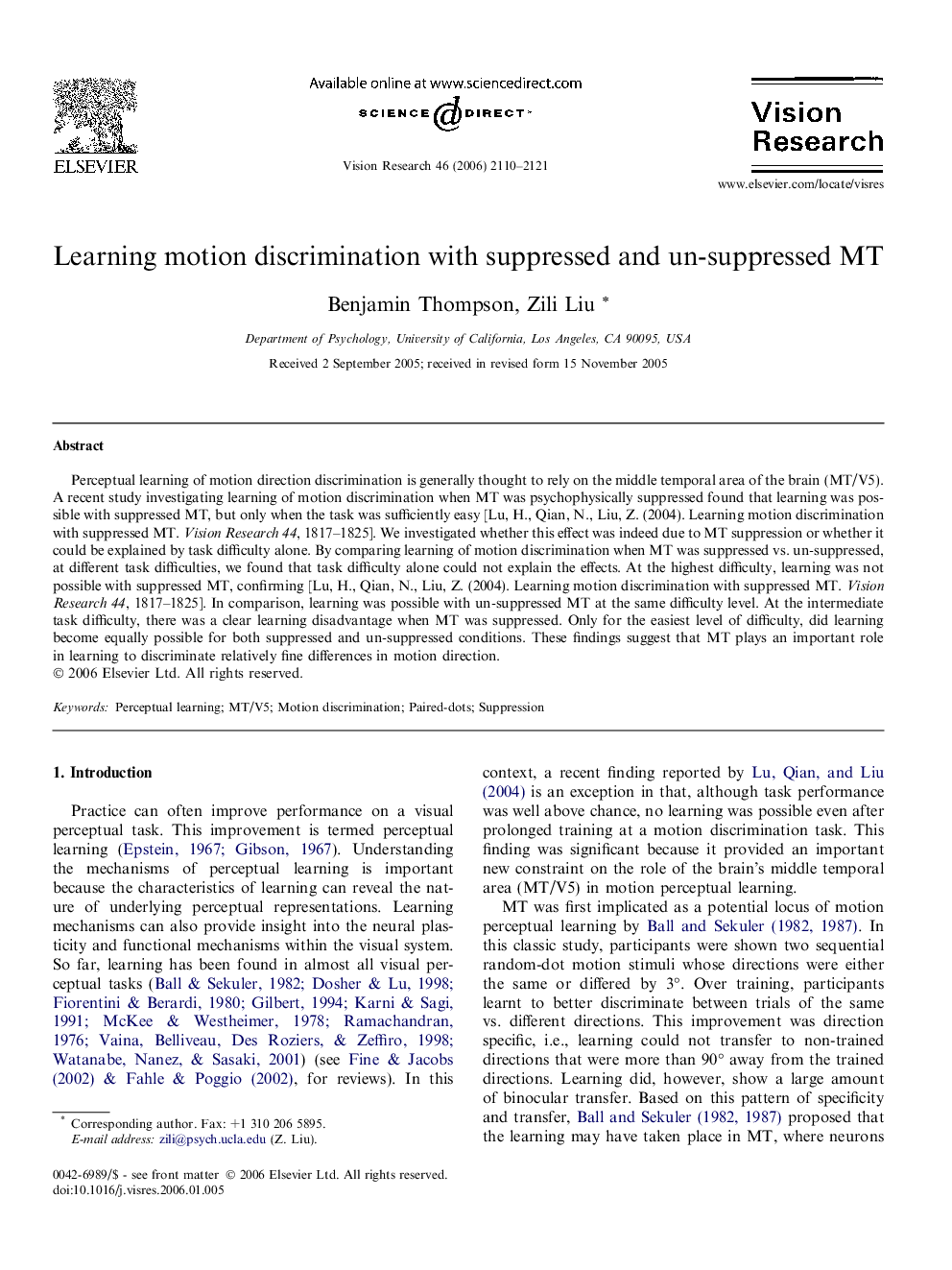| کد مقاله | کد نشریه | سال انتشار | مقاله انگلیسی | نسخه تمام متن |
|---|---|---|---|---|
| 4035780 | 1263548 | 2006 | 12 صفحه PDF | دانلود رایگان |

Perceptual learning of motion direction discrimination is generally thought to rely on the middle temporal area of the brain (MT/V5). A recent study investigating learning of motion discrimination when MT was psychophysically suppressed found that learning was possible with suppressed MT, but only when the task was sufficiently easy [Lu, H., Qian, N., Liu, Z. (2004). Learning motion discrimination with suppressed MT. Vision Research 44, 1817–1825]. We investigated whether this effect was indeed due to MT suppression or whether it could be explained by task difficulty alone. By comparing learning of motion discrimination when MT was suppressed vs. un-suppressed, at different task difficulties, we found that task difficulty alone could not explain the effects. At the highest difficulty, learning was not possible with suppressed MT, confirming [Lu, H., Qian, N., Liu, Z. (2004). Learning motion discrimination with suppressed MT. Vision Research 44, 1817–1825]. In comparison, learning was possible with un-suppressed MT at the same difficulty level. At the intermediate task difficulty, there was a clear learning disadvantage when MT was suppressed. Only for the easiest level of difficulty, did learning become equally possible for both suppressed and un-suppressed conditions. These findings suggest that MT plays an important role in learning to discriminate relatively fine differences in motion direction.
Journal: Vision Research - Volume 46, Issue 13, June 2006, Pages 2110–2121